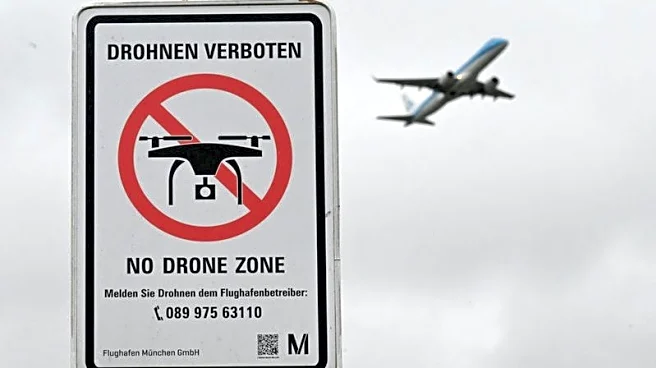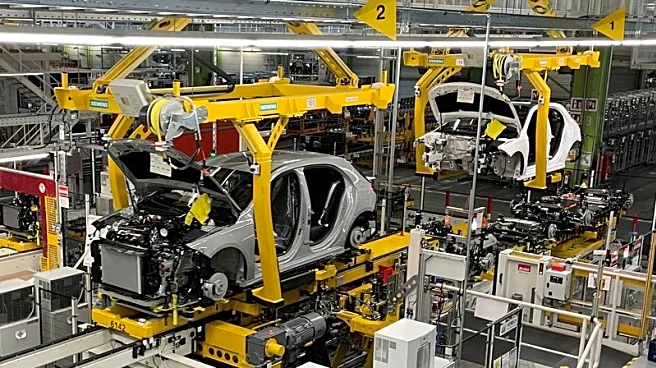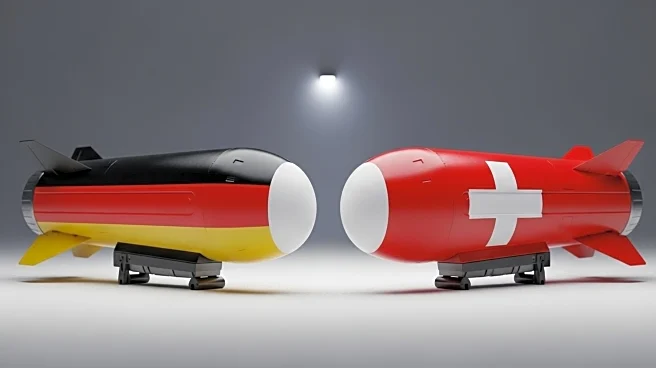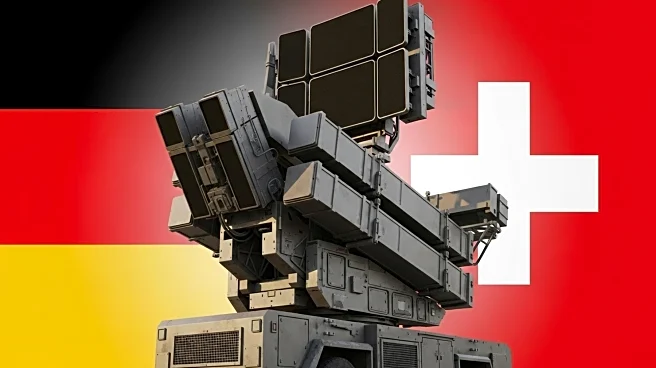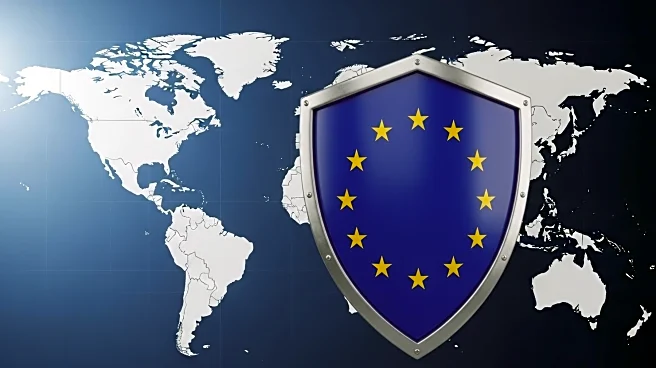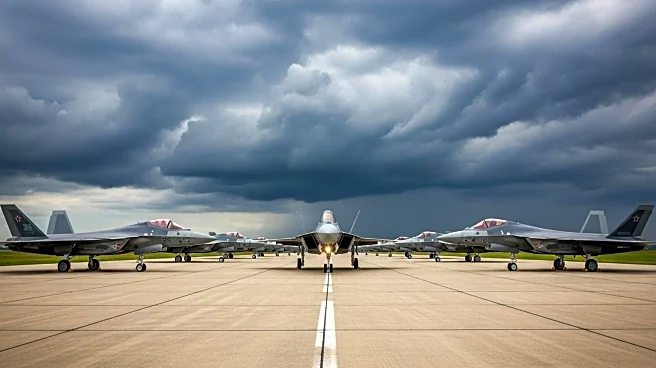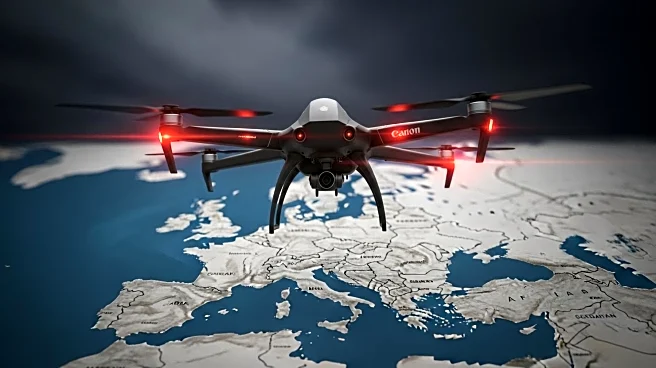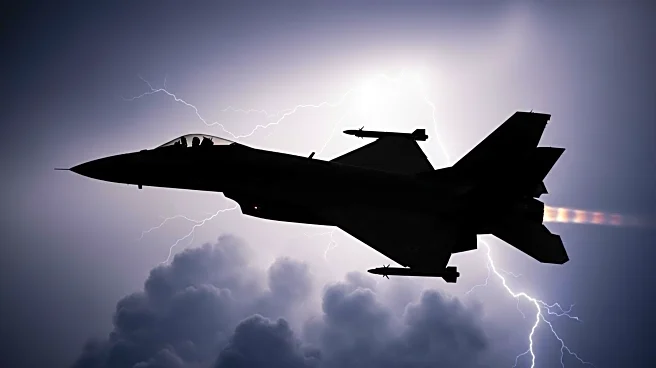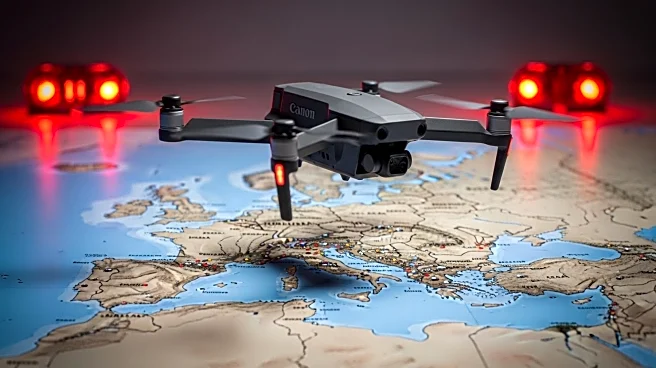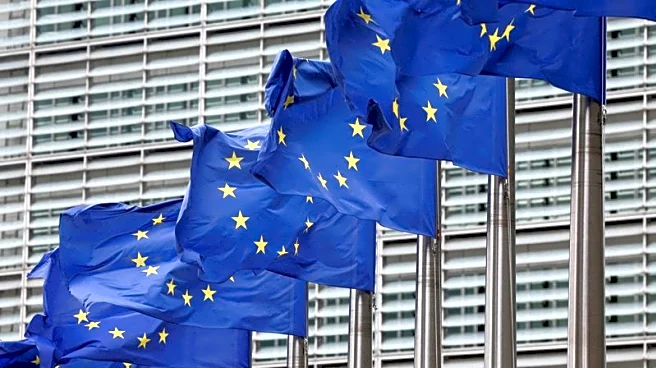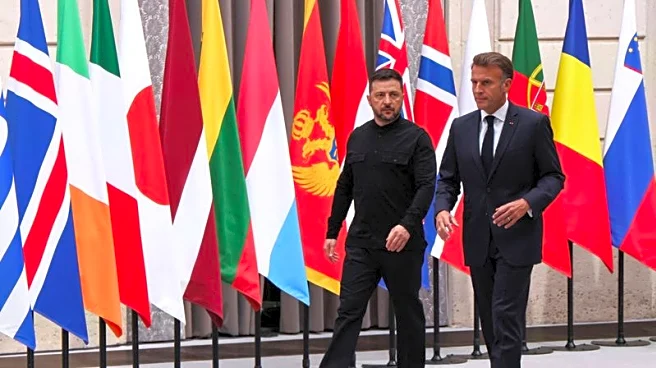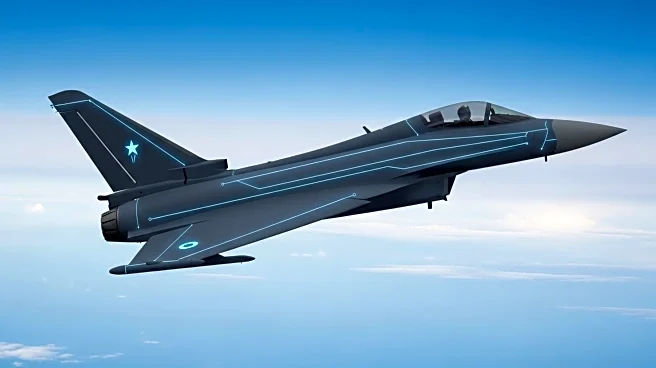By Joanna Plucinska, Toby Sterling and David Jeans
LONDON (Reuters) -Drones have increasingly disrupted airspace across Europe in recent weeks, raising alarm over the repeated incursions of uncrewed aerial vehicles and prompting airport shutdowns and flight cancellations.
Fingers have been pointed at Russia as tensions with the West have risen over its war in Ukraine, though Moscow has denied involvement and investigators are still gathering evidence. Whoever is behind the incidents, governments and regulators
are under pressure to come up with solutions.
WHY ARE DRONES A WORSENING PROBLEM AT AIRPORTS?
At least 18 suspect drones have been spotted in Denmark, Sweden, Norway and Germany by monitoring service Enigma since Sept. 16, many though not all in the vicinity of airports.
Drone incursions have impacted airports like Gatwick and Heathrow in Britain for over five years but there has been a significant upsurge in incidents this year.
"The data indicates persistent activity over several weeks, and potentially coordinated incursions on specific days," an Enigma spokesperson said, without elaborating.
Drone spottings at airports have proven especially disruptive. Airport shutdowns are expensive and ripple across the entire aviation network, delaying flights across Europe.
Ourania Georgoutsakou, Managing Director for Airlines for Europe (A4E), said the proliferating incidents should "speed up" implementation of protocols to minimise disruption in an "overstretched and fragmented European airspace". Protocols include monitoring, frequency checking and jamming.
Investigators and civilians alike have been scrambling to identify what kinds of drones are flying, what their capabilities are and who is controlling them.
The chaos created by the latest spate of incidents could be a sign of hybrid warfare tactics, chief executive of security advisory firm Dyami Eric Schouten said.
Recent drone incidents and other airspace violations show Europe is facing hybrid warfare to which it must respond with measures that go beyond traditional defence, EU Commission President Ursula von der Leyen said on Wednesday. She said it was Russia's aim is to "sow division" in Europe.
WHAT TECH DO AIRPORTS HAVE TO FIGHT BACK?
Various technologies have become available on the market, including microwaves, jammers, lasers and even missiles. Capabilities range from drone detection, jamming of frequencies used by drones, and shoot-downs.
The challenge? Most of these tools, particularly ones that can actively destroy drones, are often too potentially dangerous for a built-up civilian setting.
In 2021, the European Aviation Safety Agency issued guidance on how to manage drone disruptions and some national governments have imposed regulations limiting drone flights.
Airports have purchased their own counter-drone tools from companies like Dedrone, Thales and DJI Aeroscope, but the vast majority of these devices only provide detection tech.
Germany's government has proposed a law to allow its police to shoot down drones if needed after drone sightings disrupted Munich airport earlier this month.
But introducing lasers and missiles to take down drones in civilian airspace poses its own safety challenges, including the risk of damage to civilian aircraft and wider infrastructure.
"You really have to know, be absolutely sure, that something is hostile. And then you can intervene. There are a lot of ifs and buts," said Dutch drone expert Wiebe de Jager. He warned that many drone scares turn out to be false alarms.
Any major action will require clearer policy from government, experts say, leaving airports to mostly stick to detection tools for now.
WHAT'S NEXT?
Experts say drone incursions are expected to become more frequent across Europe.
And airports are not the only civilian locations that could be vulnerable to drone disruptions. Seaports, nuclear installations and even prisons are also prime targets for drone interference.
Although the disruptions have highlighted vulnerabilities, experts said the latest incursions would bring more clarity and action from authorities and force more coordination of counter-measures across sectors.
"I hope it really does shake things up a bit," said Stijn Willekens, Chief Executive at Active Drone Security Solutions.
(Reporting by Joanna Plucinska, Toby Sterling, David Jeans, Ilona Wissenbach; editing by Joe Brock and Mark Heinrich)
